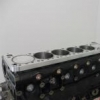HKS Advanced Heritage RB26 Concept
Announcements
-
Similar Content
-
Latest Posts
-
Weird ! Same Same with mine. Autoexcel in Bonnyrig is your friend !
-
Again these aren't 'on the street' but they were lol. Anyway for the sake of thread continuity.... Not really sure how to feel about the white Lancer Evo III. It's definitely seen better days, but these are so damn rare here now that I reckon they're photo worthy just for the record. The Datsun 1600/510/Bluebird whathaveyou looked like it had been restored at some point a while ago, but rust has since formed under the paint in some areas. Another 'too rare to not get a photo' occasion. At Nishinomiya Gardens shopping mall.
-
By Figjam Jimmus · Posted
Cheers bro. Yeah, I'll get my brother to do it. Due to my job, I don't have FB. Teacher life... haha -
By Dose Pipe Sutututu · Posted
Peak Skyline ownership 🥲 -
Bah. You could literally throw a handful of gravel into the sump with the fresh oil and that is where it will stay. Screen on pump inlet, filter on pump outlet. No grit is getting to the rubby bits. Not saying to try it, but paranoia is unjustified.
-




Recommended Posts
Create an account or sign in to comment
You need to be a member in order to leave a comment
Create an account
Sign up for a new account in our community. It's easy!
Register a new accountSign in
Already have an account? Sign in here.
Sign In Now